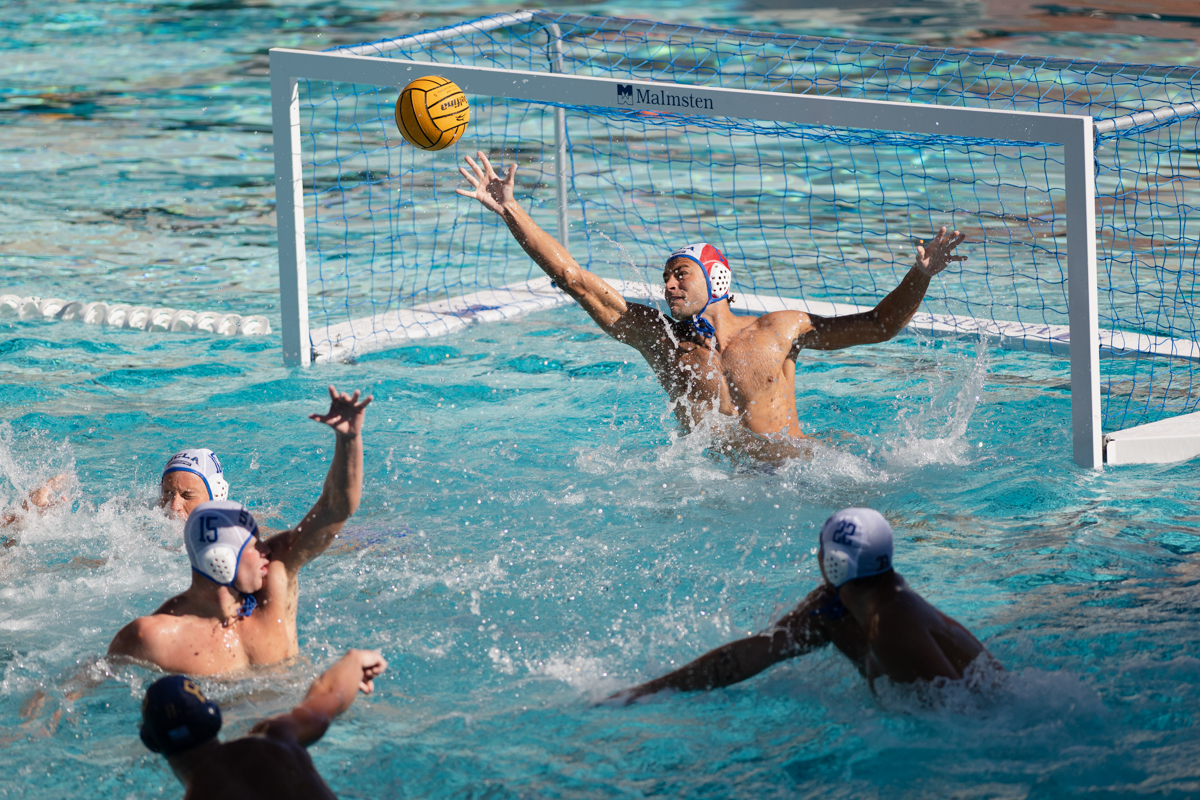
Water polo is a team sport played in water, where players attempt to score goals by throwing a ball into their opponent’s net. It is a physically demanding sport that requires a combination of swimming, throwing, and teamwork skills. Water polo is also known for its high level of contact and intensity, with players frequently tussling for possession of the ball. Despite its challenges, water polo is a popular and exciting sport that is enjoyed by many around the world.
It is believed that water polo originated in England in the late 19th century, as a variation of rugby played in rivers and lakes. The first recorded game of water polo was played in 1876 in Scotland, with rules that were similar to rugby. As the sport grew in popularity, new rules were developed to make it more structured and fair. Today, water polo is played at a professional level and is recognized as one of the most challenging and rewarding team sports.
The first international water polo match was played between England and Scotland in 1890. The match was held in Glasgow and was won by England with a score of 3-0. From this humble beginning, water polo grew in popularity around the world and eventually became an Olympic sport. Today, water polo is played in many countries and is known for its fast-paced action and thrilling competition.
Water polo became an Olympic sport for men in 1900 and for women in 2000. The sport has been a staple of the Olympic games for over a century and is considered one of the most exciting events for fans to watch. Olympic water polo matches are often intense and closely contested, with players from around the world competing for gold, silver, and bronze medals.
The water polo ball is made of rubber and weighs between 400-450 grams. The ball is designed to be buoyant in water, allowing players to throw and catch it with ease. The size and weight of the ball are regulated by international water polo rules, which ensure that all teams play with the same equipment. The ball is also designed to be durable and long-lasting, ensuring that it can withstand the rough-and-tumble nature of water polo matches.
The size of a water polo pool is 30 meters long and 20 meters wide, with a depth of at least two meters. The pool is designed to provide ample space for players to swim and move around, while also allowing for a fast-paced game. The depth of the pool is also important, as it allows players to dive and move around freely without touching the bottom. Water polo pools are often equipped with lane markers, goal posts, and other features that make the game more exciting and challenging.
A water polo team consists of seven players, including a goalkeeper. Each player has a specific role to play, from the center forward who scores the most goals, to the defenders who protect the goal and prevent the opposing team from scoring. The goalkeeper is arguably the most important player on the team, as they are responsible for stopping the opposing team from scoring goals. Water polo teams must work together effectively to be successful, with each player contributing their unique skills and abilities.
The objective of the game is to score more goals than the opposing team within four quarters of play. Water polo matches are fast-paced and often highly competitive, with both teams striving to gain the upper hand. The team that scores the most goals by the end of the game wins, with ties resolved through overtime or penalty shootouts. Scoring goals in water polo requires a combination of skill, strategy, and teamwork, making it one of the most challenging and rewarding team sports.
During a water polo match, players are not allowed to touch the bottom of the pool or hold onto the sides of the pool for support. This rule helps to keep the game fast-paced and challenging, as players must constantly swim and tread water to stay afloat. It also makes the game more physically demanding, as players must use their legs and core muscles to maintain their position in the water.
Water polo players wear caps with ear protectors to help them identify their teammates and distinguish them from their opponents. The caps also protect the players’ ears from being hit by the ball or accidentally kicked by other players. The goalkeeper wears a different color cap to make them easily recognizable, and they often have additional padding on their caps to protect their head and face from hard shots.
Water polo is a physically demanding sport that requires a high level of fitness and endurance. Players must be able to swim long distances and maintain their energy levels throughout the game. To prepare for a water polo match, players must engage in a rigorous training regimen that includes swimming, strength training, and endurance exercises. Proper nutrition and hydration are also essential to help players maintain their energy levels and perform at their best.
In addition to physical fitness, water polo also requires a high level of mental toughness and strategic thinking. Players must be able to anticipate their opponents’ moves and adjust their strategy on the fly. Coaches play a critical role in preparing their teams for matches, developing game plans, and making in-game adjustments to maximize their chances of success.
Water polo matches can be very physical, with players frequently jostling for position and engaging in contact with their opponents. However, there are rules in place to prevent dangerous or overly aggressive play. Players are not allowed to strike or kick their opponents, and they must play the ball and not the player. Referees are responsible for enforcing these rules and penalizing players who break them.
Water polo has a rich history and culture, with many traditions and customs that have been passed down through generations of players. From the pre-game rituals to the post-game celebrations, water polo has a unique and vibrant culture that is celebrated by players and fans alike. Many water polo teams have their own distinctive uniforms, chants, and cheers, adding to the sport’s colorful and dynamic character.
Water polo is a sport that can be played by people of all ages and skill levels. There are youth leagues, high school and college teams, and adult leagues that cater to players of different abilities and interests. Whether you are a beginner or an experienced player, there are opportunities to play water polo and enjoy the camaraderie and competition that the sport provides.
Water polo has been described as one of the most physically and mentally demanding team sports in the world. It requires a unique combination of swimming, throwing, and teamwork skills, making it challenging for even the most accomplished athletes. However, the rewards of playing water polo are many, including the satisfaction of mastering a difficult sport, the thrill of competition, and the camaraderie and friendship that comes from being part of a team.
Water polo is played around the world, with many countries boasting strong and competitive teams. Some of the top water polo nations include Serbia, Croatia, Hungary, Spain, Italy, and the United States. These countries have a rich tradition of water polo excellence, and their players are among the best in the world.
Water polo players are required to have excellent swimming skills, including the ability to swim long distances at a high speed. The best water polo players have a combination of speed, endurance, and agility that allows them to move quickly and effectively through the water.
Water polo matches are divided into four quarters, with each quarter lasting eight minutes. In the case of a tie at the end of the fourth quarter, the game may go into overtime or be decided by a shootout. The team with the most goals at the end of the game is declared the winner.
Water polo players are allowed to touch the ball with any part of their body except for their hands, unless they are the goalkeeper. The goalkeeper is allowed to use their hands to block shots and pass the ball to their teammates. The ball is also allowed to touch the bottom of the pool and the sides of the pool.
Water polo is a sport that requires a lot of communication and teamwork. Players must constantly communicate with their teammates to coordinate their movements and make quick decisions. Effective communication and teamwork are essential for success in water polo.
The history of water polo dates back to the 19th century, when it was played as a form of rugby in England. The game has since evolved into a modern sport that is played around the world. Water polo made its Olympic debut at the 1900 Paris Games and has been a part of the Olympic program ever since.
Water polo is a sport that requires a high degree of skill and finesse. Players must be able to pass, shoot, and defend accurately and efficiently. The best water polo players are those who can combine technical ability with physical fitness and mental toughness.
Water polo is a sport that requires a lot of specialized equipment, including caps, goggles, and mouthguards. The ball used in water polo is also unique, with a textured surface that makes it easier to grip and handle in the water.
The goalkeeper is one of the most important positions in water polo, as they are responsible for protecting the goal and preventing the opposing team from scoring. The goalkeeper must have excellent reflexes and hand-eye coordination, as well as the ability to read their opponents’ movements and anticipate shots.
Water polo is a sport that requires a lot of physical contact, and players often suffer injuries as a result. Common water polo injuries include cuts, bruises, and concussions. However, many players consider these risks to be part of the game and are willing to accept them in order to compete.
Water polo is a sport that emphasizes sportsmanship and fair play. Players are expected to respect their opponents and the rules of the game, and unsportsmanlike conduct is not tolerated. Good sportsmanship is an essential part of water polo culture.
Water polo is a sport that can be enjoyed by both men and women. The sport has separate leagues and competitions for men and women, and many co-ed leagues and tournaments also exist. Water polo is a sport that celebrates gender equality and inclusivity.
Water polo is a sport that is popular among college students, with many universities fielding competitive water polo teams. The NCAA sponsors both men’s and women’s water polo championships, and college water polo is a great way for young athletes to develop their skills and compete at a high level.
Water polo is a sport that requires a lot of mental and emotional resilience. Players must be able to handle the pressure of competition and the physical demands of the game, as well as the ups and downs of winning and losing. The ability to stay focused and motivated is essential for success in water polo.








